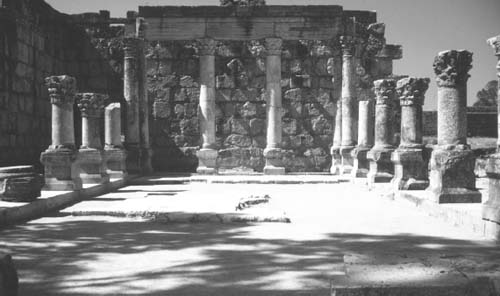JudaismLeadership, Authority, and Religious Roles |
Is there a central teaching or legislative authority for Jews? |
During later biblical times, beginning around 200 B.C.E., a principal deliberative body of seventy-one members, called the Sanhedrin (Greek synedrion), handled all religious and secular matters of importance to Jewish life. Originally located in the Jerusalem Temple, the Sanhedrin remained active until around 425 C.E. Membership consisted of three groups (at least during New Testament times): the Elders, who represented the major tribal clans and families; the High Priests, including elders of the four priestly families as well as former High Priests; and the Scribes, religious legal scholars belonging mostly to the sect known as the Pharisees. The High Priest (or nasi) was chosen from descendants of Moses’ brother Aaron and governed the council. While the Sanhedrin did function as a court of law in exceptional cases, it was concerned mostly with larger administrative and juridical issues.
Meanwhile, the Bet Din (literally, “House of Judgment”) generally adjudicated legal questions, including both religious and civil matters affecting the Jewish community exclusively. Roman law allowed for a large measure of internal rule among Jewish subjects. The Bet Din required at least three (male) judges but handled criminal cases with as many as twenty-three judges. The class of religious scholars known as the “Five Pairs of Teachers” bore responsibility for the two legal bodies. Hillel (nasi) and Shammai (Av Bet Din, Chief Justice of the Court) were the last of the Pairs. In this separation of civil and religious spheres, the High Priest generally retained final authority. The Sanhedrin temporarily ceased to exist during the long Exile, but will be renewed, according to tradition, with the arrival of the Messiah. Each Jewish community worldwide continues to have a Bet Din to arbitrate legal issues and disputes according to Jewish law.
During later Antiquity (c. 500-1000) the scholarly class called the Geonim (“Eminences”) functioned as a major authority for Middle Eastern and European Jews by publishing their rulings in documents called Responsa. For Jewish communities in Iraq, land of the Exile, the position of Exilarch (resh galuta, “head of those in exile”), a position generally occupied by laymen, continued to wield some authority until about the mid-thirteenth century. For many generations, even up to early modern times, the Qehillah, or local Jewish community organization, was the principal decision-making body.

Synagogue of Capernaum, Galilee, northern Israel, c. 200 C.E., showing Hellenistic influence in its columns and plan.
